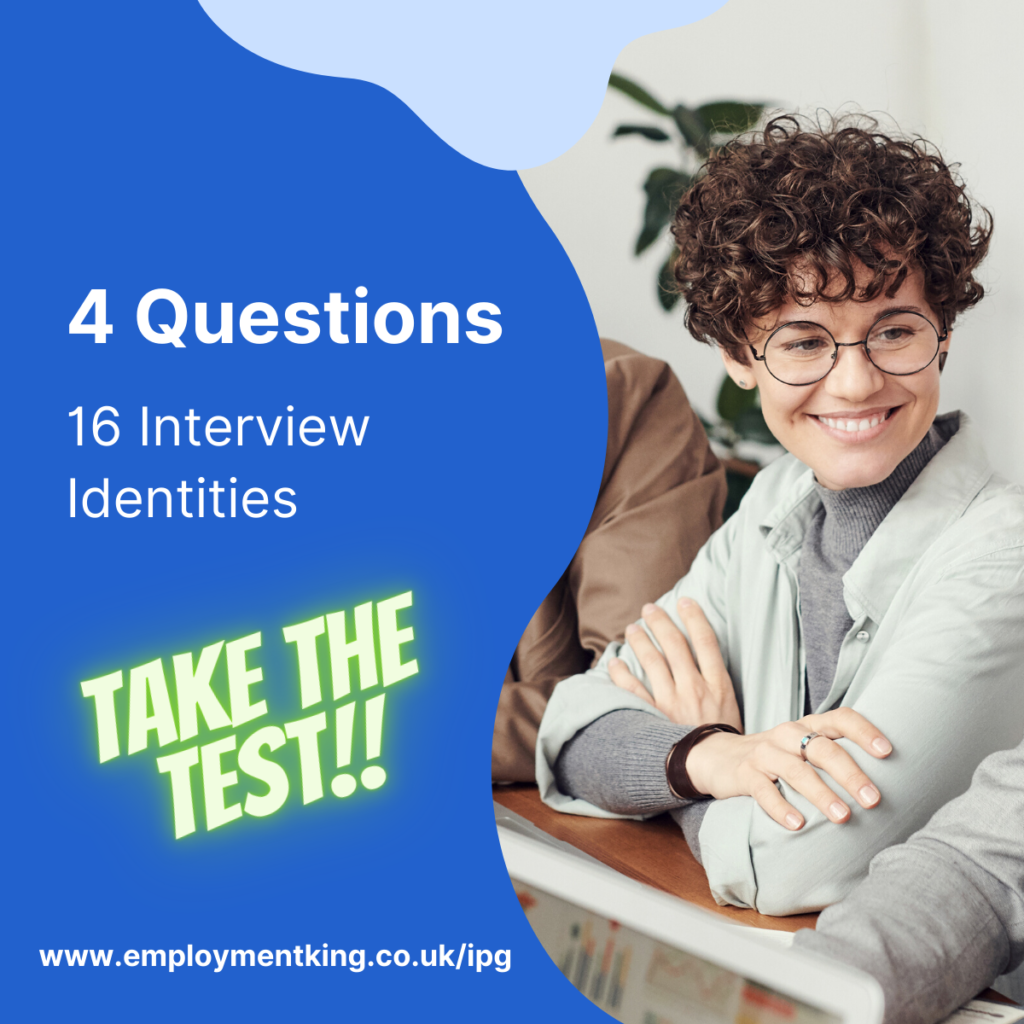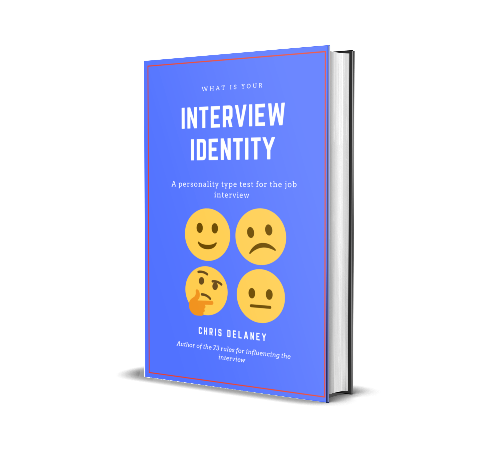On the face of it, eye contact during a virtual video interview doesn’t seem that important. In a recent study by Shinya, M., Yamane, N., Mori, Y. et al, eye contact was found to be a key decision in the hiring process.
How to present yourself effectively on camera has never been more important. In particular, the power of eye contact – something we often take for granted in face-to-face interviews – can heavily influence how an interviewee is perceived by the interviewer panel during a video interview.
In the recent study, ‘off-camera gaze decreases evaluation scores in a simulated online job interview’, researchers found that candidates who looked directly into the camera were rated more favorably compared to those who looked at the screen, which often led to ‘skewed gaze’ and the impression of disengagement.
The following article will dive into why eye contact matters in virtual interviews, how gaze can impact evaluations, and share actionable tips to help a career professional make a strong impression during an online job interview.
Why Eye Contact Matters in Virtual Job Interviews
The power of eye contact is well-documented in psychology. Eye contact builds trust, shows confidence, and demonstrates attentiveness.
In face-to-face interviews, mutual gaze – when two people make direct eye contact – fosters feelings of connection, rapport, and understanding. However, in a virtual job interview, this dynamic is disrupted by the technology the applicant uses. The typical setup of an online video interview positions the camera slightly above the screen (and on laptops and phones the camera is fixed), so even if a candidate is looking at the interviewer’s face on the screen (the natural default), the job hunters gaze can appear averted to the interview panel, creating the perception that the interviewee is not fully engaged.
The study involving Japanese university students acting as interviewees in simulated job interviews revealed that candidates who looked directly at the camera (creating the perception of eye contact) were rated higher on all evaluation criteria than those who looked at the interviewer’s face on the screen.
In other words, aligning your gaze with the camera makes you come across as more confident, engaged, and trustworthy, which can play a big role in how a career professional is perceived as a potential hire. Impression management (your interview identity) is key to helping a job seeker increase job offers during the recruitment process.
Understanding “Skewed Visuality” in Online Interviews
In face-to-face interactions, maintaining eye contact happens naturally (unless the job applicant is nervous or lacks in self-esteem which both increase a ‘downward’ gaze).
When you’re talking to a screen, it’s easy to fall into what researchers call “skewed visuality” – the disconnect caused by looking at the screen instead of the camera. Humans naturally look at the screen, the interviewers face, to subconsciously read facial ques.
From your interviewer’s perspective, skewed visuality, creates the impression that the candidate’s eyes are downcast or even distracted. This discrepancy, although unintended, can make an interviewee seem disengaged or less personable, creating a ‘bored’ or ‘indifferent’ interview identity.
The impact of skewed visuality is particularly pronounced for candidates and interviewers who place high value on social cues like eye contact. The study found that women interviewers and interviewees, in particular, rated on-camera eye contact more favorably than their male counterparts, emphasizing that subtle differences in gaze behavior may affect perceptions differently across genders.
Improve how you ‘look’ in a job interview
These practical will help you ace your job interview by improving your ‘gaze’ during an online job interview
1. Set Up Your Screen and Camera for Success
- Elevate Your Camera to Eye Level: A webcam positioned at eye level creates the most natural look. Many people make the mistake of looking down at their laptop camera, which can create the perception of being distant or disengaged.
- Minimize the Interview Window: Shrink the video call window and move it as close to the camera as possible. This makes it more natural for the job applicant to look at both the camera and the interviewer’s face simultaneously, which can help maintain focus without losing that all-important direct “eye contact.”
- Center Yourself in the Frame: Sitting far enough from the camera so that an applicant’s head and shoulders are in the shot is the best frame, and avoid positioning yourself too close to the camera, which can make an interviewee appear overly intense.
2. Practice Looking Directly at the Camera
Looking directly at the camera will at first feel strange and unnatural. However, you can use visual cues to train yourself:
- Use Sticky Notes as Reminders: Place a small sticky note next to your camera to remind yourself where to look, particularly during key moments of the interview.
- Practice with Video Recordings: Record yourself answering interview questions while looking at the camera. Notice how your gaze affects your appearance and adjust accordingly until you feel comfortable.
3. Engage with Non-Verbal Cues
Non-verbal cues, like nodding and smiling, can help convey warmth and interest even when your gaze is fixed on the camera.
- Nod Slightly While Listening: Nodding conveys attentiveness and engagement. This subtle movement can help bridge the gap between face-to-face and virtual interaction, making you appear more approachable.
- Smile at Appropriate Times: A genuine smile can enhance your facial expressions, making you seem more personable and enthusiastic. Smiling while looking at the camera is especially effective in creating a warm first impression.

4. Be Mindful of Cultural Nuances and Gaze Expectations
While gaze direction is essential, cultural factors can influence how your gaze is perceived. In some cultures, direct eye contact might be interpreted differently, especially in professional settings. Although Western contexts typically favor direct eye contact as a sign of confidence, East Asian contexts may not emphasize eye contact to the same extent. However, regardless of cultural norms, intentional eye contact in an interview setting often signals professionalism and attentiveness.
- Research Cultural Norms: If you’re interviewing with an international company, it may be helpful to research cultural expectations around eye contact.
- Ask for Feedback: If you’re unsure, consider asking a friend from a similar background to your interviewer to watch a practice interview and provide feedback on your gaze behavior.
5. Test Your Setup Before the Interview
Technical glitches or awkward camera angles can distract from your focus, so give yourself time to set up and practice before the actual interview. Here are some quick checks:
- Check Your Internet Connection: A stable connection reduces the chances of delays, which can throw off the timing of your eye contact.
- Run a Mock Interview: Have a friend or career coach conduct a mock interview on the same platform. Test your gaze technique to ensure you appear as natural as possible.
- Adjust Your Lighting: Good lighting from the front (preferably natural light) can help highlight your face, making your expressions and gaze clearer. Avoid backlighting, which can create shadows and make it harder for the interviewer to read your expressions.

Overcoming the Challenge of “Skewed Visuality” with Confidence
While the difference between looking at the screen and looking at the camera may seem small, it has significant implications for online interactions, particularly in formal settings like job interviews. Candidates who appear as though they’re making direct eye contact tend to be perceived as more engaged and personable. By mastering these gaze techniques, you can stand out as a confident communicator.
Final Thoughts: Virtual Interviews and Future Trends in Communication Technology
As technology advances, the gap between virtual and face-to-face communication may narrow. In the meantime, understanding and leveraging the power of intentional gaze can give a savvy job hunter an edge in virtual interviews. Looking at the camera, practicing subtle non-verbal cues, and being mindful of cultural nuances will help candidates establish the presence of someone who’s genuinely invested in the conversation, even through a screen.
In a competitive job market, small adjustments during an interview performance can make a big difference in how potential employers perceive the career professional. By adopting these techniques, an interviewee can easily navigate the unique challenges of virtual interviewing, creating a lasting, positive impression that could be the deciding factor in landing a lucrative job offer.
Source:
Shinya, M., Yamane, N., Mori, Y. et al. Off-camera gaze decreases evaluation scores in a simulated online job interview. Sci Rep 14, 12056 (2024).
Delaney, C. (2021). What Is Your Interview Identity. MX Publishing.





